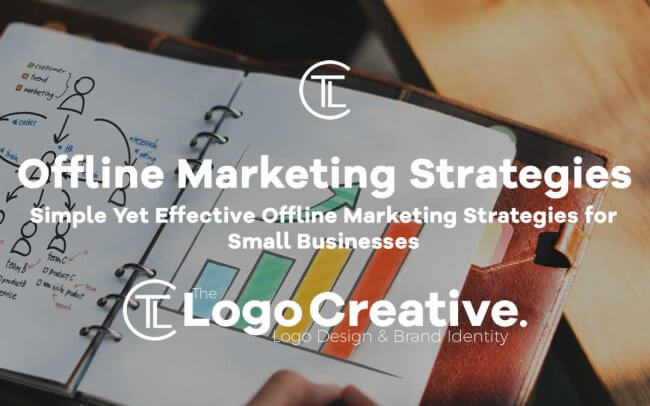There is no denying the fact how the internet has brought a disruptive change in the world. It has significantly improved the way people are communicating with each other – social media is a prime example of that. The Internet has given a new lease of life to businesses as well and how online marketing has immensely benefited them is just unprecedented. The rise of e-commerce is the telltale testimony of transformation in business.
However, the offline marketing strategies have not died yet. Technological advancements notwithstanding, there is certainly a place for offline marketing for businesses. There are so many people who still don’t engage on the web, thereby making them harder to reach to. Therefore, offline marketing and advertising should remain in the minds of business owners much in the same way as online marketing.
If you haven’t been taking up offline marketing efforts with that vigor and determination, time is quite apt for you to do so.

Offline media typically comprises of newspapers, magazines, radio, and television. These prominent communication channels haven’t lost their sheen as yet; rather they are equally important, especially for businesses to promote their brands. Your offline strategy too should involve offline media.
So how to do that?
To begin with, you can communicate or get associated with certain journalists who are constantly lookout for interesting stories. You can also give interviews to such journalists about your unique business journey, tell them what your brand stands for, and let rest of the people know how your products or services are different from your competitors. People are generally interested in knowing whether a product or service can solve their specific problems. So if you can build a narrative around it, you can pitch it to the media via the media. This means generating interest among the listeners and readers is the key, and hence, your media collaboration should factor in this insight.
Table of Contents
Send Direct Mail
Even though internet dominates the domain of mail, but direct mail is still holding strong. According to a report by Direct Mail Association (DMA), direct mail boasts a 4.4% rate, compared to email’s average response rate of 0.12%. The DMA surprisingly discovered the fact that as compared to emails, direct mail’s response rate varies from 10 to 30 times higher. This is primarily because so many unsolicited marketing emails coming in the inbox, while direct mail is personalized in nature. Consider this, you receive a direct mail customized for you that has weight, substance, and dimension. Wouldn’t it give you an intuitive experience? Wouldn’t it get you excited? The feeling that crosses your mind is someone deemed you important enough that he/she wrote you a letter. Turns out it’s not very often that you receive something like this. The result of this is quite in the line of expectations – you sit down and read every word of that letter. This stands true from a psychological viewpoint. You send a direct mail and the recipient will do exactly the same.
Conduct Offline Engagements
Offline engagements will help you get a foothold on various forums, which in turn will give you an edge to reach out to potential customers. Workshops, seminars, and demonstrations are highly powerful offline engagements. These engaging platforms will give you a way to establish your business as an expert voice of authority in your industry. Apart from the aforementioned engagements, industry events and trade shows can be invaluable opportunities at your disposal to provide useful content and establish credibility. These offline engagements will help you build brand awareness while allowing you to network with potential customers. Thus, for these engagement sessions, identify the best topics that address customer pain points.
Coupons, Flyers, And Handouts
Coupons, flyers, and handouts are an effective way of getting random people’s attention while they walk or drive down the street. The best part is they can be printed with a very little or virtually no cost. You can distribute these items from your place of business or from distribution points where prospects congregate. You can use these different items as a way of guerilla marketing, for example, leaving sticky notes at random places could be a good idea. You can also print custom address labels for your brand and advertise these promotions on a sidewalk. Small businesses do need business cards as a way of offline promotion as well. You can leave a business card as your tip at a restaurant. Furthermore, by offering your product or service as the prize for a local contest, you can build visibility for your business.
Join Business Networks
You must understand the importance of offline networking while still maintaining a digital presence. For that, a very strategic move is to join clubs, business groups, and associations that attract prominent business leaders. Being part of these business networks, you get an opportunity to meet people who may know potential customers pertaining to your business. You can ask them if you can use their names in making calls. One of the effective ways of networking is to partner with other businesses and team up with people who are selling contemporary products or services. Networking is also important because the personal interaction is easier than online interaction. It may take some practice but once mastered, effective communication becomes radically easier.
Final Thoughts
Effective marketing, as we just mentioned, is not limited to only online strategies – offline marketing is just as important. In fact, effective marketing must encompass thoughtful strategies both on and offline.
Author Bio
Sam Willas is an expert in writing about business and marketing.

